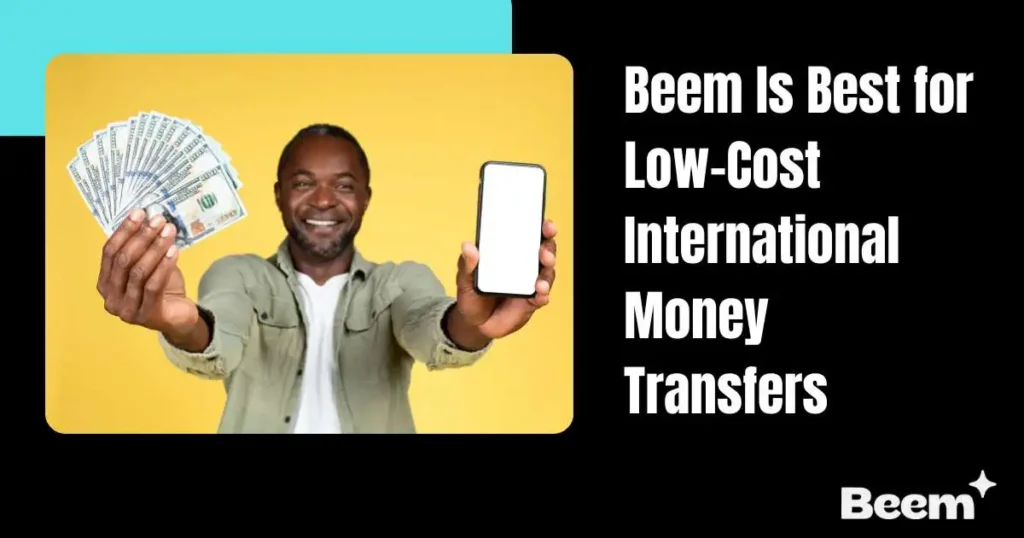At A Glance
Transferring money internationally or even domestically can cost more than individuals think. Conventional money transfer methods, including bank wire transfers, remittance companies, and money orders, usually include conspicuous and inconspicuous fees. Are Gift Cards Cheaper? This question arises as people seek more cost-effective alternatives to traditional transfer methods.
The most evident fees are transaction charges, which may amount to $10 to $50 or even more per transfer. Such charges are particularly high for international or same-day remittances. But exchange rate markups are only the beginning.
Need to send money but short on cash? Try Apps like Beem as a convenient solution with Send Now, Pay Later™, letting you transfer funds when it matters most and settle the payment later. Skip the hassle of traditional fees and delays—visit Beem’s platform to experience faster, more intelligent money transfers today.
Understanding the True Cost of Sending Money
Most money transfer services also profit from exchange rate markups, i.e., the rate you receive is worse than the actual market rate. Add in possible intermediary bank fees, service fees, and processing fees, and the cost to transfer money can be considerably higher than expected.
On the other hand, gift cards—mainly digital or store-brand ones—are a different scenario. Digital gift cards tend to have minimal or no fees. Most major platforms charge a small activation fee, if anything, especially when utilizing prepaid Visa or Mastercard. In most situations, there are no transfer fees, and the beneficiary receives the full gift card amount.
When the cost is considered overall, gift cards are much lower, particularly for small and medium transfers.
Also Read: What Are the Risks of Sending Money Internationally?
Speed and Convenience: Instant vs. Waiting Days
Time is often of the essence when sending money. Traditional bank transfers, especially international ones, can take 1 to 5 business days to process. In some regions, delays may be longer due to additional verification or manual processes. Money transfer offices may also have limited hours of operation or require in-person visits and identity verification.
Digital gift cards, on the other hand, offer instant delivery. They can be sent via email, SMS, or mobile app within seconds of purchase, making them highly efficient for emergencies, birthdays, or other last-minute needs.
Even physical gift cards, when shipped, can arrive faster than some international wire transfers, depending on the destination. The convenience factor of gift cards extends to both sender and recipient—no paperwork, long forms, or waiting lines.
For users looking for instant money transfer options without delays, digital gift cards offer a decisive advantage.
Accessibility for All Recipients
One of the most significant barriers to traditional money transfers is accessibility. Many people worldwide still do not have access to formal banking systems. In fact, according to the World Bank, over 1.4 billion adults globally remain unbanked. For these individuals, receiving funds through a bank transfer is either impossible or extremely cumbersome.
Gift cards break down these barriers. In most cases, recipients don’t need a bank account or identification. A digital gift card can be used directly at a retailer or online store or converted into products or services. This is especially beneficial in areas where traditional financial infrastructure is limited or where the recipient may not want to interact with formal banking institutions.
Moreover, gift cards provide more privacy and flexibility in spending funds, making them an empowering choice for many recipients.
Comparing Fees and Hidden Costs

Before choosing whether gift cards are the ultimate choice for gifting, we need to understand whether they have any hidden charges. Oftentimes, people regret their choices once they realize there are hidden charges to pay. In this sectio,n let’s dive deeper into the financial implications of traditional money transfers versus gift cards.
Traditional Transfer Fees:
Let’s look at the potential fees associated with traditional transfer fees.
- Transaction Fee: $10–$50 per transfer
- Exchange Rate Margin: 1%–5% hidden fee
- Intermediary Bank Fees: Vary based on routing
- Service Taxes and Processing Fees: Additional charges in some regions
Gift Card Fees:
Let’s take a look at the potential gift card fees.
- Digital Retailer Gift Cards: Typically, no fees
- Prepaid Visa/Mastercard: Usually $2–$6 activation fee
- No exchange rate markups if the card is used in the same currency region
When you add it up, traditional transfers can cost up to 10%–15% of the total amount sent, while gift cards generally allow nearly 100% of the funds to be received as intended. Additionally, digital gift cards eliminate intermediaries, helping the sender and recipient avoid hidden fees.
If your goal is to minimize transfer fees, gift cards present a much more straightforward, more predictable value proposition.
Also Read: Transfer Money Globally Without Fees Using Gift Cards: A Complete Guide
When Gift Cards Make the Most Sense
Gift cards are all the rage today! People prefer to opt for gift cards because of their security and the level of convenience they offer. All you need is the ID number to get the money.
They are a great gift option compared to others as they allow people to pick whatever they like, without the hassle of exchanges. These gift cards shine brightest in specific use cases where speed, cost-efficiency, and simplicity matter most:
1. Small to Medium Transfers: Sending $25 to $200? A digital gift card may be the ideal option. The cost of a bank transfer may outweigh the value of a small remittance, while gift cards let you send the exact amount you want without excessive deductions.
2. Emergencies and Urgent Needs: Need to send support to a family member or friend immediately? With instant delivery, gift cards can cover urgent purchases like groceries, medicine, or online essentials.
3. Retail-Specific Usage: If you want to ensure the money is spent on something specific—say groceries, electronics, clothing, or entertainment—a retailer-specific gift card guarantees that the funds go exactly where intended.
4. Unbanked or Underbanked Recipients: For individuals who lack access to bank accounts, mobile wallets, or even ID documents, gift cards offer a practical and dignified alternative to receiving support.
5. Gifting Purposes: As the name suggests, gift cards are also ideal for birthdays, holidays, graduations, and other special occasions. They serve a dual purpose of cash transfer and personal gesture.
Key Takeaways: Which Option Is Cheaper?
When it comes to sending money, the “cheapest” option isn’t always about face value—it’s about understanding the total cost, convenience, and recipient usability. Based on our breakdown, here’s how the options stack up:
| Feature | Traditional Transfer | Gift Cards |
| Upfront Fees | High ($10–$50) | Low to none |
| Hidden Fees | Yes (exchange rate) | Minimal to none |
| Speed | 1–5 business days | Instant (digital) |
| Recipient Requirements | Bank account, ID | None (for retailer cards) |
| Use Flexibility | High (cash usable) | Medium (store-based use) |
| Best For | Large transfers, business | Small transfers, personal needs |
Conclusion: Are Gift Cards Cheaper vs. Traditional Money Transfers
In conclusion, sending money with digital gift cards is often cheaper, faster, and easier than using traditional bank or remittance services for most small, personal, or emergency transfers. They eliminate many of the fees and delays associated with banks and offer more accessible options for unbanked populations.
However, they may not be suitable for every situation. Always consider the recipient’s location, accessibility, and how they intend to use the funds. For larger transfers or payments requiring maximum flexibility, traditional methods may still have a role to play.
Ultimately, the choice comes down to your goals: if you want to avoid transfer fees, enable instant money transfer, and provide direct, usable value, gift cards are an increasingly innovative and practical option.
With Beem, international and domestic money transfers become simpler, faster, and more flexible. Whether you’re supporting family abroad or paying bills across borders, Beem lets you Send Now, Pay Later™, giving you the freedom to transfer funds instantly—even when your budget is tight. Explore seamless transfers without the stress at Beem’s money transfer page.






